

Articles
How To Store Winter Clothes
Modified: February 28, 2024
Learn how to store your winter clothes properly to keep them in good condition for the next season. Check out our helpful articles for tips and advice.
(Many of the links in this article redirect to a specific reviewed product. Your purchase of these products through affiliate links helps to generate commission for Storables.com, at no extra cost. Learn more)
Introduction
As the winter season comes to an end, it’s time to start thinking about storing your winter clothes. Proper storage not only helps to extend the lifespan of your winter garments, but it also ensures that they are in good condition and ready to use when the chilly weather returns. Whether you live in a region with extreme winters or just experience a mild cold season, storing your winter clothes correctly is essential to prevent damage and maintain their quality.
In this article, we will explore the best practices for storing winter clothes. From choosing the right storage method to organizing and maintaining your garments, we’ll provide you with valuable tips and tricks to keep your winter wardrobe in pristine condition while maximizing storage space.
Key Takeaways:
- Proper storage of winter clothes is crucial for maintaining their quality and ensuring they are in good condition when the cold weather returns. From choosing the right storage method to cleaning and organizing, these tips will help you preserve your winter wardrobe effectively.
- Utilizing storage bins, vacuum-sealed bags, and proper maintenance techniques are key to preserving the longevity and quality of your winter clothes. By following these guidelines, you can ensure that your garments remain fresh, organized, and ready to wear when the next cold season arrives.
Read more: How To Store Winter Clothing
Choosing the Right Storage Method
Before you start packing away your winter clothes, it’s important to consider the right storage method. The choice of storage largely depends on the available space, the type of clothing, and personal preference.
One popular storage method is using vacuum-sealed bags. These bags come with a built-in vacuum seal that removes air, reducing the size and volume of the clothing. Vacuum-sealed bags are ideal for bulkier items like puffy jackets, sweaters, and blankets. They not only save space but also provide protection against dust, moisture, and pests.
Another common option is using storage bins or containers. These sturdy containers are available in various sizes and are perfect for organizing your winter clothes. They offer protection against pests and moisture and are suitable for garments that need to maintain their shape, such as coats and suits.
Cleaning and Preparing Winter Clothes for Storage
Before stowing away your winter clothes, it’s crucial to clean them properly. Make sure all items are washed or dry cleaned according to their care instructions. This step is particularly important as it helps to remove any dirt, stains, or odors that may attract pests during storage.
Once cleaned, ensure that all garments are completely dry before storing them. Any moisture left in the fabric can lead to mold, mildew, and musty smells. Hang your clothes outside or use a dryer to thoroughly dry them before packing them away.
Sorting and Organizing Winter Clothes
Sorting and organizing your winter clothes can make the process of finding and retrieving items much easier when the cold weather returns. Start by separating your clothes into different categories, such as jackets/coats, sweaters, scarves, hats, and gloves.
Within each category, further organize the items based on their material, style, or frequency of use. This will help you locate specific pieces quickly and prevent unnecessary rummaging through your storage containers.
Using Vacuum-sealed Bags for Winter Clothes
Vacuum-sealed bags are a space-saving option for storing bulkier winter clothes like puffy jackets, sweaters, and blankets. To use them, fold your garments neatly and place them inside the bags. Seal the bags and use a vacuum cleaner to remove the air. The bags will shrink in size, allowing you to store them easily on shelves or in drawers.
Remember to label each bag with its contents, so you can quickly identify what’s inside without having to open every bag.
Key Takeaways:
- Proper storage of winter clothes is crucial for maintaining their quality and ensuring they are in good condition when the cold weather returns. From choosing the right storage method to cleaning and organizing, these tips will help you preserve your winter wardrobe effectively.
- Utilizing storage bins, vacuum-sealed bags, and proper maintenance techniques are key to preserving the longevity and quality of your winter clothes. By following these guidelines, you can ensure that your garments remain fresh, organized, and ready to wear when the next cold season arrives.
Read more: How To Store Winter Clothing
Choosing the Right Storage Method
Before you start packing away your winter clothes, it’s important to consider the right storage method. The choice of storage largely depends on the available space, the type of clothing, and personal preference.
One popular storage method is using vacuum-sealed bags. These bags come with a built-in vacuum seal that removes air, reducing the size and volume of the clothing. Vacuum-sealed bags are ideal for bulkier items like puffy jackets, sweaters, and blankets. They not only save space but also provide protection against dust, moisture, and pests.
Another common option is using storage bins or containers. These sturdy containers are available in various sizes and are perfect for organizing your winter clothes. They offer protection against pests and moisture and are suitable for garments that need to maintain their shape, such as coats and suits.
If available space is limited, you can also consider utilizing under-bed storage options. These specially designed storage bags or containers can easily slide under the bed, maximizing the use of space in your home.
Aside from vacuum-sealed bags and storage bins, you may also opt for garment bags for delicate and formal winter clothing. Garment bags provide an additional layer of protection against dust, dirt, and fading. They are particularly useful if you have expensive or heirloom pieces that require careful handling and preservation.
When choosing a storage method, it’s important to consider the environmental conditions as well. If you live in an area with high humidity, it’s recommended to use moisture-absorbing products such as silica gel packets or moisture-absorbing crystals to prevent mold and mildew growth. These can be placed inside your storage containers or bags to maintain a dry environment.
Additionally, consider choosing storage options that provide protection against pests. Mothballs or cedar blocks are commonly used to deter insects and pests from damaging clothing. However, keep in mind that mothballs have a strong odor and should be used in well-ventilated areas or replaced with alternatives such as lavender sachets or cedar chips for a more pleasant scent.
Ultimately, the choice of storage method will depend on your specific needs and circumstances. It’s essential to consider factors such as available space, type of clothing, environmental conditions, and desired level of protection to ensure that your winter clothes are stored effectively and kept in excellent condition until the next cold season arrives.
Cleaning and Preparing Winter Clothes for Storage
Before stowing away your winter clothes, it’s crucial to clean them properly. Make sure all items are washed or dry cleaned according to their care instructions. This step is particularly important as it helps to remove any dirt, stains, or odors that may attract pests during storage.
Start by checking the care labels on your garments. Some winter clothes, such as wool coats or delicate sweaters, may require professional dry cleaning. Take these items to your trusted dry cleaner and communicate that the items will be stored. This ensures that any stains or invisible dirt particles are properly treated before storage.
If your winter clothes are machine washable, separate them based on color and fabric type to avoid color bleeding or damage. Use a gentle cycle and mild detergent. Avoid using harsh chemicals or bleach, as they can cause discoloration or weaken the fabric fibers.
It’s important to thoroughly dry your clothes before storing them. Any moisture left in the fabric can lead to mold, mildew, and musty smells. Hang your clothes outside on a dry and sunny day to let them air dry naturally. If weather conditions do not permit outdoor drying, use a dryer on a low heat setting or hang them on a clothes drying rack indoors. Ensure that the garments are completely dry before proceeding to pack them away.
Keep in mind that certain winter accessories, such as hats, scarves, and gloves, may have different cleaning requirements. Check the care labels for specific instructions on cleaning these items. Some hats and scarves may be machine washable, while others may need to be hand washed. Use a mild detergent and gently squeeze out excess water. Lay them flat to dry or reshape them if necessary.
For winter boots and shoes, wipe off any dirt or debris using a damp cloth. If they are wet, stuff them with newspaper or shoe inserts to help them maintain their shape and absorb moisture. Allow them to air dry before storing them. Consider applying a protective spray or conditioner to leather boots to prevent drying or cracking during storage.
Finally, take the time to inspect your winter clothes for any signs of damage or wear. Repair any loose buttons, tears, or loose threads before storing them to prevent further damage.
By cleaning and preparing your winter clothes for storage, you can ensure that they remain fresh, clean, and ready to wear when the cold weather returns. Proper cleaning not only extends the lifespan of your garments but also reduces the risk of attracting pests or developing unpleasant odors during storage.
Sorting and Organizing Winter Clothes
Sorting and organizing your winter clothes can make the process of finding and retrieving items much easier when the cold weather returns. Start by separating your clothes into different categories, such as jackets/coats, sweaters, scarves, hats, and gloves.
Within each category, further organize the items based on their material, style, or frequency of use. This will help you locate specific pieces quickly and prevent unnecessary rummaging through your storage containers.
Begin by examining each garment and determining whether it is still in good condition and fits well. This is an excellent time to declutter and get rid of any items that you no longer wear or that are damaged beyond repair. Consider donating them to a local charity or recycling them responsibly.
Once you have sorted through your winter clothes, it’s time to think about the best way to organize them. Here are a few organizing tips to help you make the most of your storage space:
- Use matching hangers for coats, jackets, and heavy sweaters. This not only keeps them organized but also helps maintain their shape.
- Invest in closet dividers or hanging organizers to separate categories of clothing within your closet. This makes it easy to locate specific items without having to sift through a cluttered closet.
- Utilize storage bins or baskets on shelves or in drawers to keep smaller accessories like scarves, hats, and gloves together.
- Label your storage containers to quickly identify their contents. This saves time when you need to retrieve specific items.
- If you have limited closet space, consider using under-bed storage solutions for items like extra blankets or seasonal shoes. Vacuum-sealed bags are also great for compressing bulky items like coats or sweaters.
Remember to store your winter clothes in a cool, dry, and dark place. Exposure to sunlight can cause fading, and high humidity can lead to mold or mildew growth. If possible, avoid storing clothes in basements or attics unless they are climate-controlled.
Organizing your winter clothes not only ensures that they are easy to find when you need them but also helps to extend their lifespan. By taking the time to categorize and arrange your winter wardrobe, you’ll have a stress-free and efficient experience when it’s time to bring them out again for the next cold season.
Using Vacuum-sealed Bags for Winter Clothes
Vacuum-sealed bags are a space-saving option for storing bulkier winter clothes like puffy jackets, sweaters, and blankets. To use them, fold your garments neatly and place them inside the bags. Seal the bags and use a vacuum cleaner to remove the air. The bags will shrink in size, allowing you to store them easily on shelves or in drawers.
Vacuum-sealed bags offer several benefits when it comes to storing winter clothes:
- Maximize Space: The main advantage of vacuum-sealed bags is their ability to compress clothing and bedding. By removing the air, the bags shrink in size, allowing you to save valuable storage space. This is particularly useful for bulky items like winter coats and down jackets.
- Protection against Dust and Moisture: Vacuum-sealed bags provide a protective barrier against dust, moisture, and insects. Once sealed, the bags create an airtight environment that helps to keep your winter clothes clean and fresh throughout the storage period.
- Easy Organization: Vacuum-sealed bags allow you to store a large number of items in a compact manner, making it easier to keep your winter clothes organized. With labeled bags, you can quickly identify the contents without having to open them, saving you time and effort.
- Long-Term Storage: If you plan to store your winter clothes for an extended period, such as during the off-season, vacuum-sealed bags are an excellent choice. They provide enhanced protection against moisture, mold, and pests, ensuring that your clothes remain in excellent condition when you retrieve them.
When using vacuum-sealed bags, it’s important to keep a few things in mind:
- Follow Folding Techniques: Proper folding is key to maximizing space when using vacuum-sealed bags. Fold your clothes neatly to minimize wrinkles and creases. You can also roll the garments for added space-saving benefits.
- Avoid Overstuffing: While vacuum-sealed bags can handle a significant amount of clothing, it’s important not to overstuff them. Overfilling the bags may cause them to burst or lose their seal, compromising the protection of your winter clothes.
- Use Caution with Delicate or Structured Items: Vacuum-sealed bags may not be suitable for delicate fabrics or structured items like tailored coats. These items can lose their shape when compressed for an extended period. Consider alternative storage methods, such as hanging or using garment bags, to protect these items.
- Rotate Your Bags: It’s a good practice to rotate the use of vacuum-sealed bags over time. This allows for airflow and prevents any potential damage to your clothes caused by extended compression.
Remember to label each vacuum-sealed bag with its contents. This will help you locate specific items without having to open every bag. Additionally, consider storing similar items together, such as all the sweaters in one bag or all the winter coats in another. This makes it easier to find specific pieces when needed.
Using vacuum-sealed bags for your winter clothes is an efficient and convenient way to save space while keeping your garments well-protected during storage. By following the proper techniques and taking the necessary precautions, you can ensure that your winter clothes remain in excellent condition until the next cold season arrives.
Read more: How To Store Winter Shoes
Utilizing Storage Bins and Containers
Storage bins and containers are versatile options for organizing and storing your winter clothes. They provide protection against pests, moisture, and dust while keeping your garments neatly organized. Here’s how you can effectively utilize storage bins and containers for your winter clothes:
- Choose the Right Size and Material: Select storage bins and containers that are appropriate for your needs. Consider the quantity and size of your winter clothes to determine the best container size. Opt for durable materials like plastic or fabric bins that can withstand long-term storage.
- Sort and Categorize: Before placing your clothes in the storage containers, sort and categorize them based on their type, size, or frequency of use. This will make it easier to find specific items later on. You can also consider using smaller containers within larger ones to further organize your clothes.
- Fold Neatly and Group by Category: Fold your winter clothes neatly before placing them in the storage bins. This not only saves space but also helps maintain the shape of the garments. Group similar items together, such as sweaters, pants, or accessories, to keep them organized and easily accessible.
- Label Your Containers: Labeling your storage bins and containers is essential for easy identification. Use adhesive labels or markers to indicate the contents of each container. This way, you can quickly locate specific items without having to open every container.
- Consider Climate Control: If your storage area is prone to extreme temperature or humidity changes, consider using climate-controlled storage bins or placing moisture-absorbing products inside the containers. This helps prevent mold, mildew, and musty smells from developing on your winter clothes.
- Stack or Nest Containers: Maximize your storage space by stacking or nesting containers whenever possible. This makes the most efficient use of vertical space and keeps your storage area organized. Ensure that the containers are sturdy and secure to prevent any accidents or toppling.
- Store in a Dry and Cool Space: Find a dry and cool space in your home to store the containers. Avoid areas that are prone to moisture accumulation, such as basements or attics, unless they are well-sealed and climate-controlled. Keep the containers away from direct sunlight to prevent fading or discoloration of your garments.
Utilizing storage bins and containers for your winter clothes helps protect them from damage and keeps them easily accessible when needed. Whether you have limited closet space or want to keep your seasonal clothing organized, using these storage solutions is a practical and efficient approach.
Remember to periodically check on your stored winter clothes to ensure they remain in good condition. Inspect for any signs of pests, moisture, or damage, and address any issues promptly. With proper organization and storage, your winter clothes will be ready to wear when the chilly weather returns.
Hanging and Storing Winter Coats and Jackets
Winter coats and jackets are often bulkier and heavier than other clothing items, requiring specific storage considerations. Here are some tips for hanging and storing your winter coats and jackets:
- Choose the Right Hangers: Invest in sturdy, wide-shouldered hangers to properly support the weight of your winter coats and jackets. Avoid wire hangers or thin plastic ones that can cause stress points or create creases in the fabric.
- Empty Pockets and Zip Up: Before hanging your coats and jackets, remember to empty the pockets and zip up any zippers. This helps maintain the shape of the garment and prevents any items or accessories from being lost or damaged during storage.
- Give Them Breathing Room: Avoid overcrowding your coat closet or storage area. Give each coat or jacket enough space to hang freely without being squished or crushed by other items. This helps prevent wrinkles, creases, and deformation of the garment.
- Consider Using Garment Bags: If you have limited closet space and need to store your winter coats for an extended period, consider using garment bags. Garment bags provide an extra layer of protection against dust, moths, and other potential damages. Look for breathable fabric garment bags to prevent moisture buildup.
- Store in a Cool, Dry Area: Find a cool, dry area in your home to hang or store your winter coats and jackets. Avoid damp or humid spaces, as these conditions can lead to mold, mildew, and musty odors. If possible, choose a well-ventilated closet or use a dehumidifier to maintain optimal conditions.
- Rotate and Refresh: Regularly rotate your coats and jackets during the off-season. This prevents unnecessary strain on the shoulders and helps maintain their shape. Additionally, take the opportunity to air out and lightly brush or shake the garments to remove any dust or debris.
- Avoid Direct Sunlight: Keep your winter coats and jackets away from direct sunlight, as prolonged exposure can cause fading or discoloration. If your closet has windows, consider using curtains or blinds to minimize sun exposure.
- Consider Professional Storage: If you have valuable or delicate winter coats or jackets, you may opt for professional storage. Professional storage facilities offer climate-controlled environments that ensure optimal conditions to preserve your garments’ quality.
Remember to check your coats and jackets periodically during storage for any signs of pests, stains, or damage. Taking proper care and storing your winter coats and jackets appropriately will help them stay in excellent condition, ready to keep you warm and stylish when the cold weather returns.
Storing Winter Boots and Shoes
When the winter season comes to an end, it’s essential to properly store your winter boots and shoes to maintain their condition and maximize their longevity. Here are some tips for storing winter footwear:
- Clean Thoroughly: Before storing your winter boots and shoes, make sure to clean them thoroughly. Remove any dirt, mud, or salt stains from the surface using a soft brush or cloth. Use a mild detergent or specialized cleaner if necessary. Cleaning your footwear prevents stains from setting in and keeps them fresh for the next season.
- Allow for Drying Time: Ensure that your boots and shoes are completely dry before storing them. Moisture can lead to mold, mildew, and unpleasant odors. Wipe them with a dry cloth or place them in a well-ventilated area to air dry. Avoid direct heat sources, as they can cause damage to certain materials.
- Stuff with Newspaper: After cleaning and drying, stuff your boots with newspaper or use shoe inserts to help them maintain their shape. This step is particularly important for tall boots to prevent them from slouching or developing creases during storage. The newspaper also absorbs any residual moisture and helps to keep the interior fresh.
- Consider Boot Shapers or Boot Trees: For tall boots or boots made from delicate materials, consider using boot shapers or boot trees. These are specially designed inserts that help your boots maintain their shape and prevent them from sagging or developing creases. Boot shapers or trees are particularly useful for leather or suede boots.
- Store in a Cool, Dry Place: Find a cool and dry area to store your boots and shoes. Excessive heat or humidity can cause damage to leather, suede, or fabric materials. Avoid storing them in a basement or attic unless the area is climate-controlled. Opt for a closet or storage space away from direct sunlight and fluctuations in temperature.
- Consider Shoe Boxes or Storage Solutions: If you have space, consider using shoe boxes or clear plastic shoe storage containers. These keep your boots and shoes protected from dust and can be stacked to save space. Alternatively, you can use fabric shoe storage solutions like hanging organizers or cubbies.
- Label and Rotate: To make it easier to find specific boots or shoes the next winter season, label your storage containers or shoe boxes. This allows for quick identification without having to open each box. Additionally, periodically rotate the footwear during storage to prevent any materials from becoming too compressed or flattened.
- Take Care of Leather: If you have leather boots, apply a quality leather conditioner before storing them. This helps moisturize the leather and prevent cracking. Store them in a breathable cloth bag or pillowcase to protect them from dust and maintain their quality.
By following these storage tips, you will ensure that your winter boots and shoes are in excellent condition when you need them again in the next winter season. Proper cleaning, drying, and storing techniques help preserve the quality and appearance of your footwear, extending their lifespan and allowing you to enjoy them for years to come.
Storing Hats, Scarves, and Gloves
Properly storing your hats, scarves, and gloves during the off-season is essential to keep them organized and in good condition. Here are some tips to store your winter accessories:
- Clean Before Storing: Before storing your hats, scarves, and gloves, make sure they are clean. Check the care labels and wash or dry clean them accordingly. Removing dirt, oils, and stains prevents potential damage and keeps them fresh for the next winter season.
- Sort and Organize: Separate your hats, scarves, and gloves into categories and group them by type. This makes it easier to find specific accessories when needed. Consider organizing them by color or style as well.
- Fold or Roll: For hats and scarves, carefully fold or roll them to save space and prevent creases. Gloves can be stored as pairs, folded together, or placed inside one another.
- Consider Hanging: If you have limited storage space or want to display your hats, consider using a hat rack or hooks to hang them. This keeps them easily accessible and helps maintain their shape.
- Use Storage Bins or Cubbies: Storage bins or cubbies are ideal for storing accessories like scarves and gloves. Choose bins with dividers or designated compartments to keep items organized and prevent tangling.
- Create a Storage System: Label your storage bins or compartments to easily identify and access specific accessories. This saves time and prevents unnecessary rummaging through your storage containers.
- Avoid Direct Sunlight: Store your hats, scarves, and gloves in a cool and dry location away from direct sunlight. Exposure to sunlight can cause fading or discoloration. Consider using storage containers or drawers in a closet or a shaded area of your home.
- Protect from Moths and Pests: To protect your accessories from moths and pests, place them in protective bags or use mothballs, cedar chips, or lavender sachets. These natural repellents help deter bugs and keep your accessories fresh.
- Rotate and Refresh: During the off-season, take the opportunity to rotate your accessories. This prevents unnecessary strain on specific items and ensures they all get some ventilation. It also allows you to inspect and potentially repair any damaged items.
By following these tips, you can effectively store and organize your hats, scarves, and gloves. Proper storage ensures they stay in good condition and are easily accessible when the winter season returns. Take the time to clean, fold, and create a designated storage space for your accessories to keep them fresh, protected, and ready to be worn again.
Read more: How To Store Winter Hats
Maintaining Your Winter Clothes During Storage
Proper maintenance of your winter clothes during the off-season ensures that they remain in excellent condition and ready to wear when the cold weather returns. Here are some tips to help you maintain your winter garments while in storage:
- Regularly Inspect: Periodically check on your stored winter clothes to ensure they are in good condition. Look out for any signs of pests, mold, or damage. Taking proactive measures can help tackle issues before they worsen.
- Avoid Plastic Bags: Although it may be tempting to use plastic bags for storing your clothes, they can trap moisture and promote the growth of mold and mildew. Instead, opt for breathable fabric or linen garment bags that allow proper airflow.
- Avoid Wire Hangers: Wire hangers can distort the shape of your winter coats and jackets over time. Choose wide-shouldered, sturdy hangers made of wood or plastic to properly support the weight and maintain the shape of the garments.
- Refresh with Air: Give your stored winter clothes some fresh air occasionally. On mild, dry days, you can take them outside and hang them in a shaded area or a well-ventilated space for a few hours. This helps eliminate any musty odors that may have developed during storage.
- Avoid Strong Odors: Avoid storing your winter clothes near items with strong odors, such as mothballs or cedar blocks. These products can transfer their scent to your clothing, resulting in an unpleasant odor that may be difficult to remove.
- Avoid Pest Infestation: Take preventive measures to protect your winter clothes from pests like moths or beetles. Cedar chips, lavender sachets, or citrus peels can be placed near your stored garments to deter insects naturally.
- Follow Care Instructions: When the time comes to retrieve your winter clothes from storage, make sure to carefully read and follow the care instructions on the garments. This ensures that you clean and care for them properly before wearing them. Some clothing may require professional cleaning or special treatment.
- Rotate and Refold: Periodically rotate and refold your stored winter clothes to prevent prolonged creasing and help them maintain their shape. This is especially important for delicate fabrics like cashmere or silk.
- Store in Optimal Conditions: Ensure that your storage area remains cool, dry, and well-ventilated throughout the time your winter clothes are in storage. Avoid areas with excessive moisture, temperature fluctuations, or direct sunlight, as these factors can damage the fabrics.
By practicing these maintenance tips, you can ensure that your winter clothes retain their quality and are ready to be worn when the colder season returns. Proper storage, regular inspections, and following care instructions go a long way in preserving the longevity and appearance of your winter garments.
Conclusion
Properly storing your winter clothes is essential for maintaining their quality and ensuring they are in good condition when the cold weather returns. By following the tips and techniques outlined in this article, you can effectively store and organize your winter wardrobe.
Choosing the right storage method, such as vacuum-sealed bags or storage bins, helps maximize space while protecting your garments from dust, moisture, and pests. Cleaning and preparing your winter clothes before storage ensures they remain fresh and free from stains or odors.
Sorting and organizing winter clothes by category and using methods like labeling or hanging ensures easy accessibility and prevents unnecessary rummaging through storage containers. Taking the time to properly store winter coats and jackets on the right hangers or with supportive inserts helps maintain their shape and longevity.
When it comes to winter accessories like hats, scarves, and gloves, folding or rolling them and utilizing storage bins or hooks keeps them organized and prevents damage. Storing winter boots and shoes after cleaning and allowing them to dry thoroughly helps preserve their condition for future use.
Maintaining winter clothes during storage involves regular inspections, proper ventilation, and following care instructions. By periodically checking on your garments, avoiding plastic bags, and refreshing them with air, you can prevent potential issues such as pest infestation or musty odors.
Remember to follow the care instructions on your winter clothes when retrieving them from storage, and take the necessary steps to clean and care for them before wearing again. By following these guidelines, your winter clothes will be in excellent condition, ready to keep you warm and stylish when the cold season returns.
So, don’t overlook the importance of proper winter clothes storage. Give your garments the care they deserve during the off-season, and you’ll enjoy their warmth and comfort year after year.
Frequently Asked Questions about How To Store Winter Clothes
Was this page helpful?
At Storables.com, we guarantee accurate and reliable information. Our content, validated by Expert Board Contributors, is crafted following stringent Editorial Policies. We're committed to providing you with well-researched, expert-backed insights for all your informational needs.
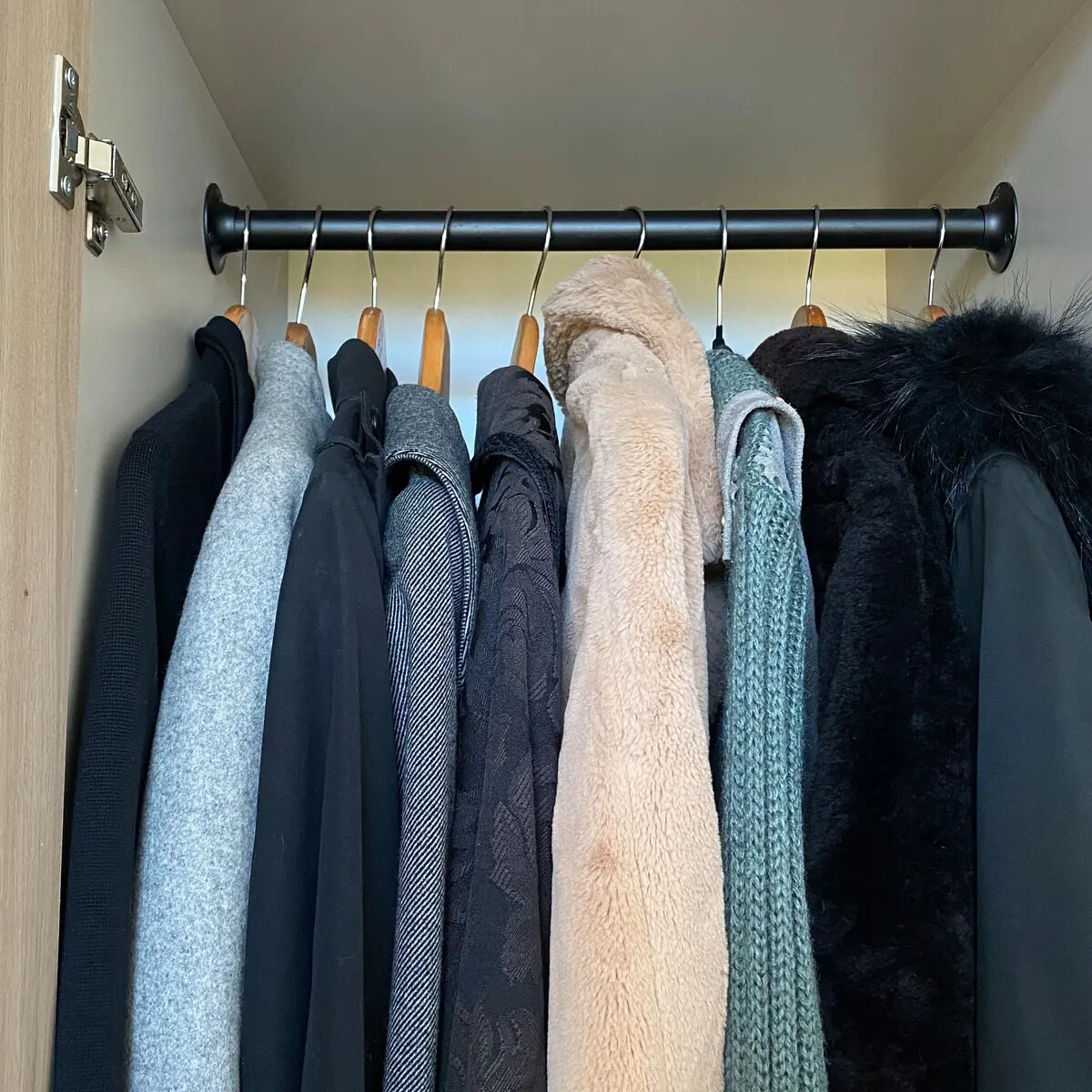





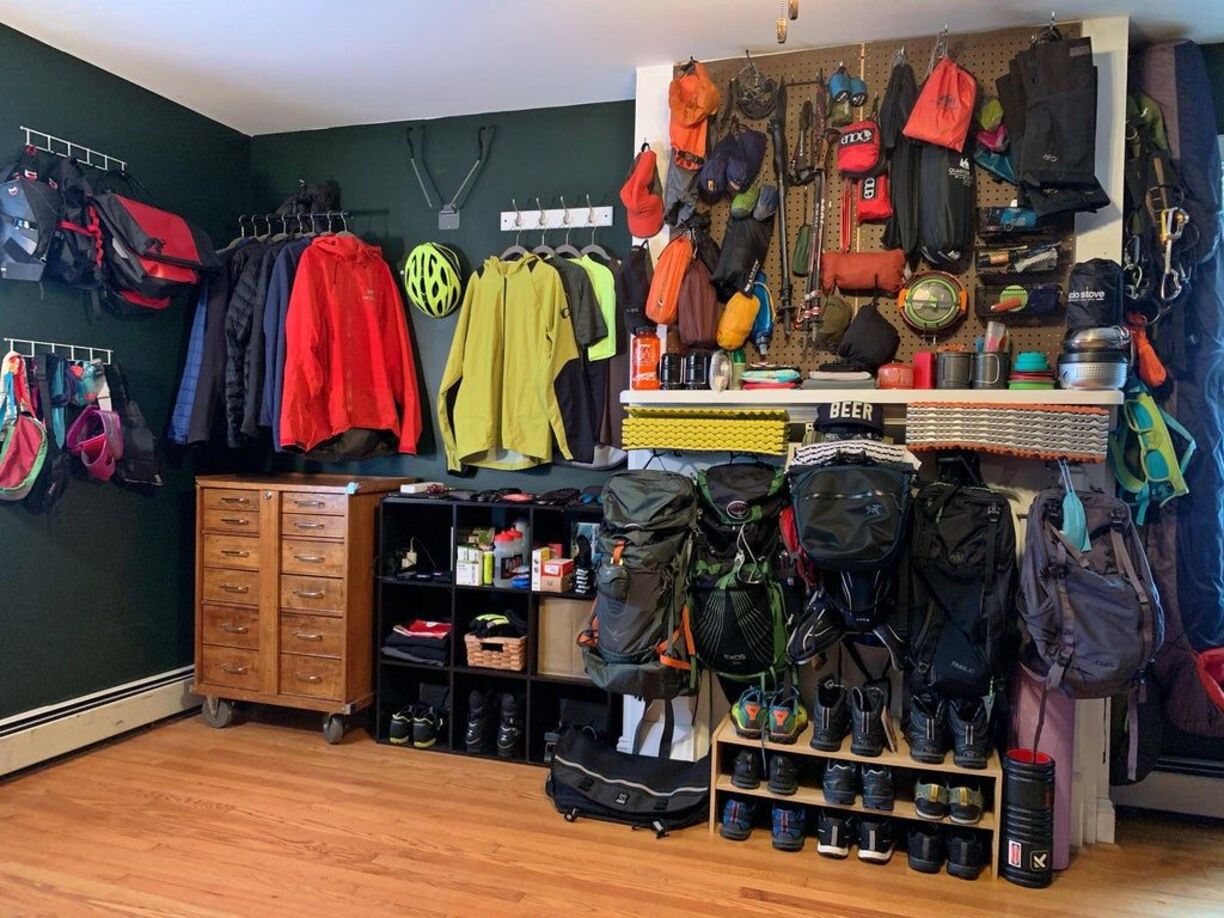
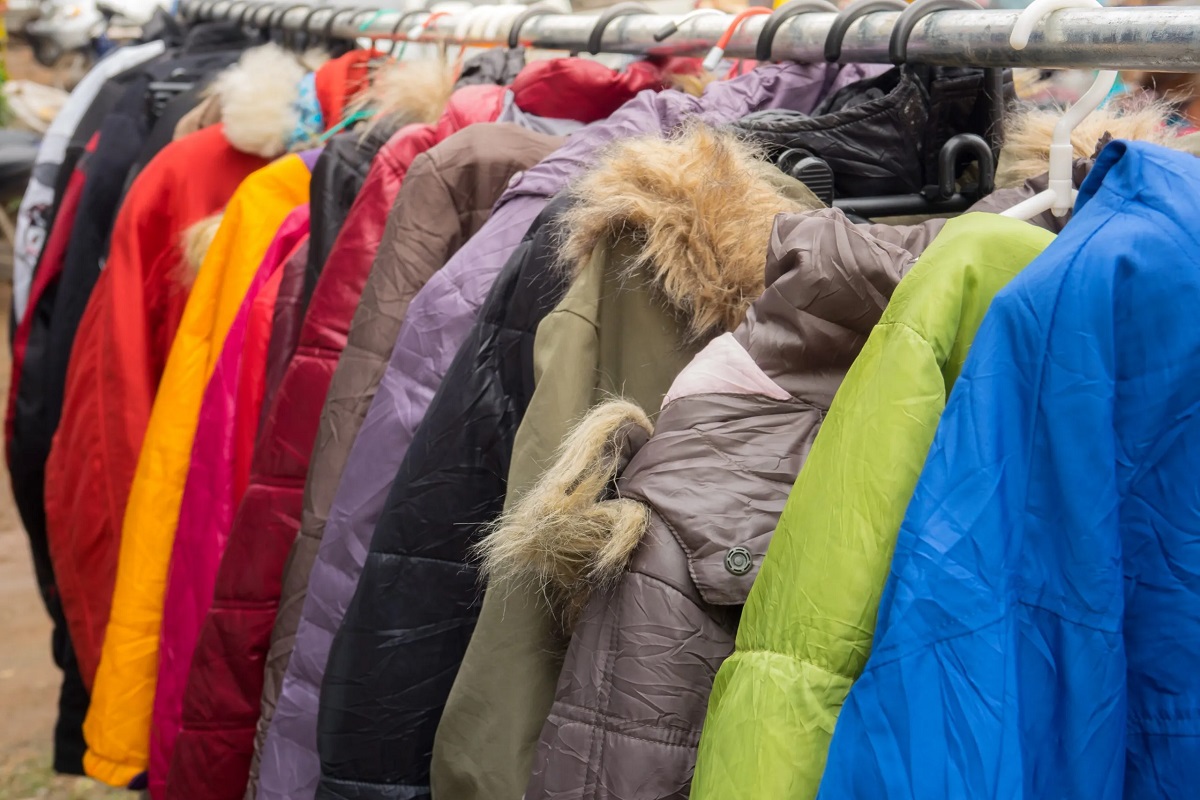
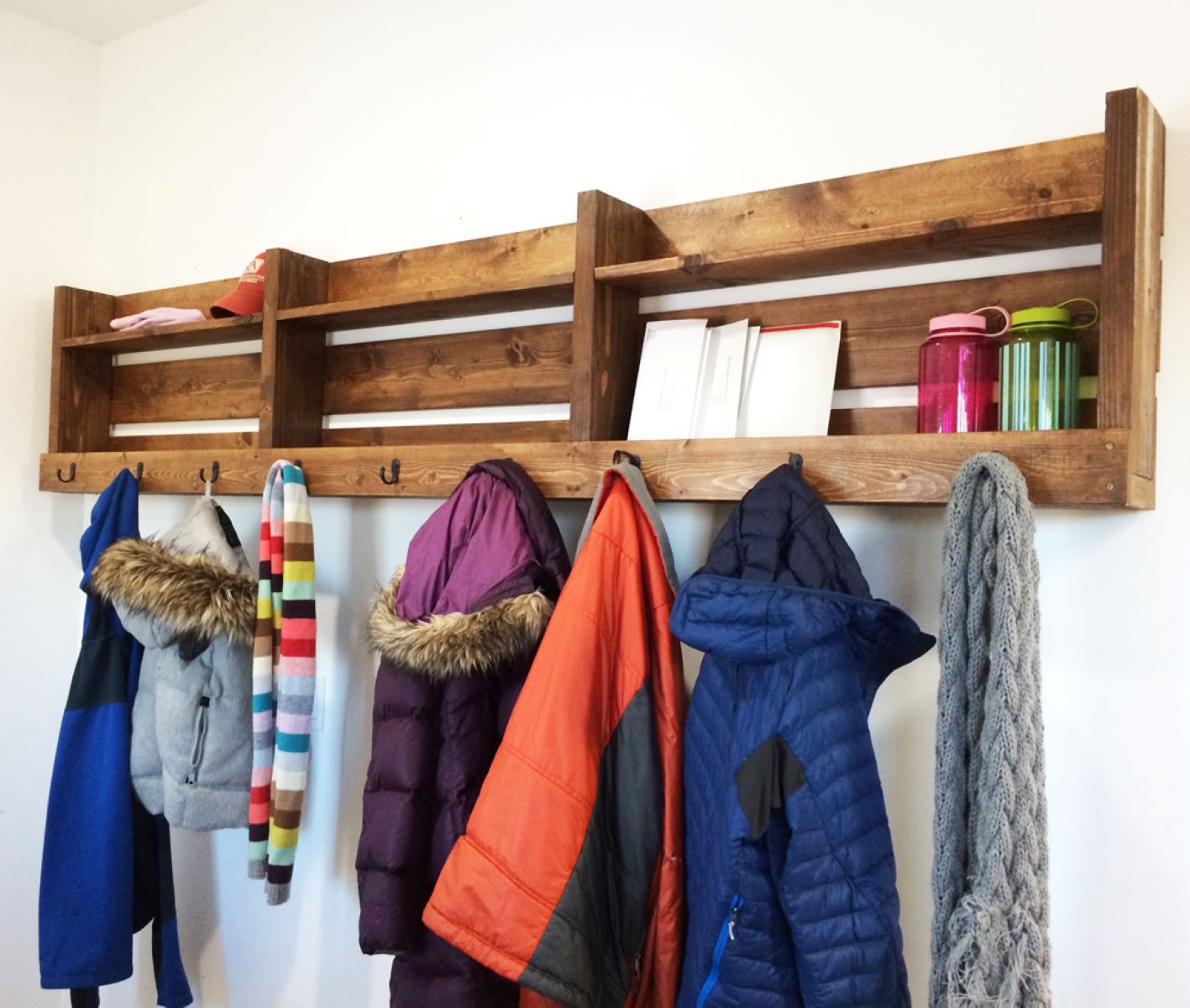
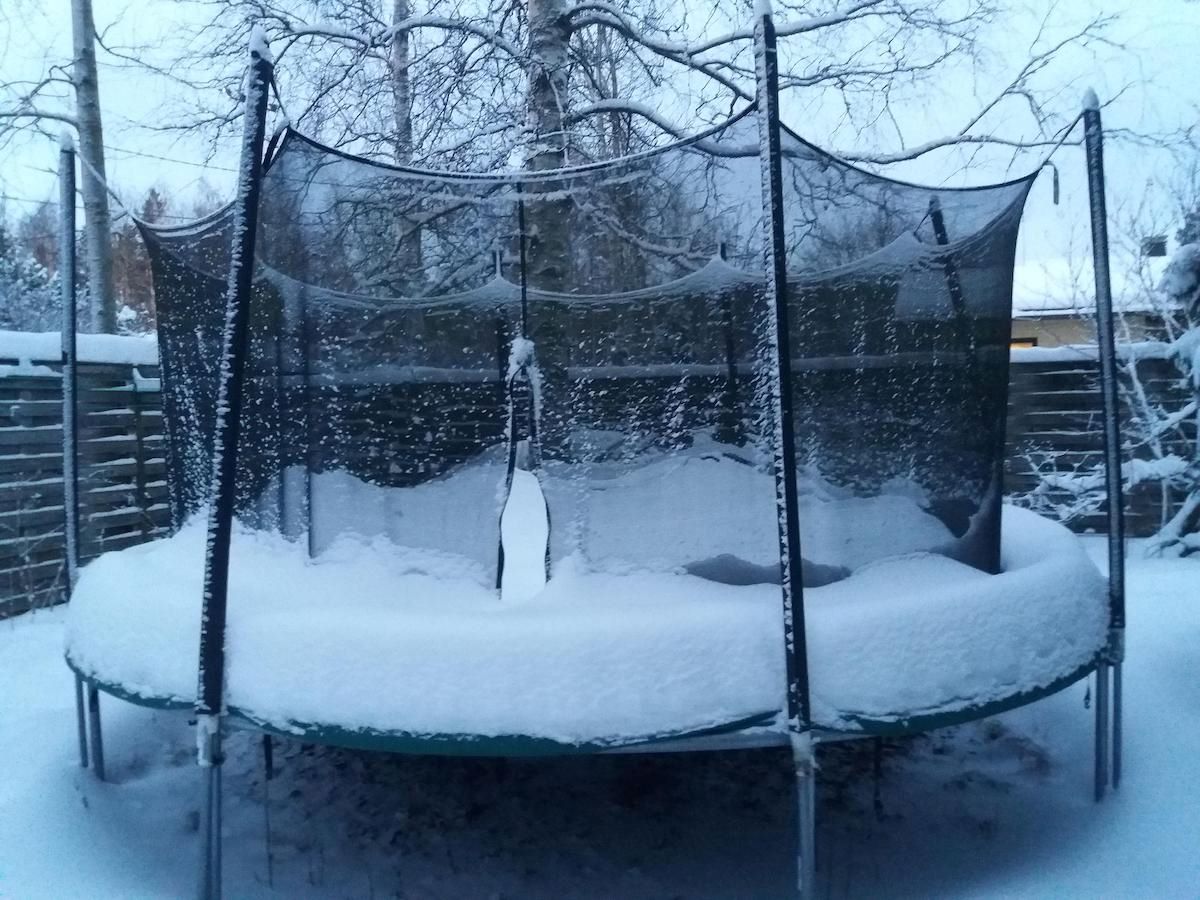



0 thoughts on “How To Store Winter Clothes”